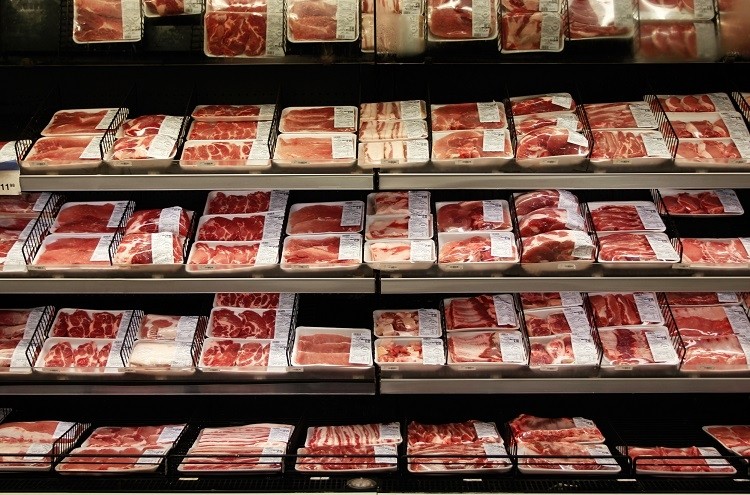Bagley Farms Meat Market Edwardsville IL: Your Best Destination for Regional Meat Selection
Bagley Farms Meat Market Edwardsville IL: Your Best Destination for Regional Meat Selection
Blog Article
Discover the Art of the Butcher's Cut in a Modern Meat Market
In the ever-evolving landscape of modern meat markets, the butcher's cut has actually transcended its conventional roots, merging olden workmanship with contemporary practices. What really establishes the contemporary butcher apart is their ability to build a deeper connection in between customers and the origins of their meat.
Development of Butchery Strategies

The mid-20th century saw butchery methods better fine-tuned by clinical insights right into muscle mass biology and meat aging, boosting both tenderness and preference. Advancements like vacuum packaging and refrigeration expanded item shelf-life, allowing butchers to expand offerings and improve quality assurance. This period likewise noted the surge of customized devices, such as band saws and meat slicers, which raised accuracy and effectiveness in meat processing.
The 21st century has presented digital innovation right into the butchery world. Electronic systems currently aid in tracking animal provenance and maximizing cuts to fulfill details customer preferences. Furthermore, a resurgence in artisanal butchery has arised, mixing traditional skills with modern-day understanding to accommodate customers seeking moral and lasting meat options. This evolution emphasizes a vibrant interaction in between custom and innovation, conference modern demands while protecting the craft's heritage.

Understanding Meat Cuts

Understanding the complexities of meat cuts is vital for both butchers and consumers seeking top quality and value. Each cut originates from a different part of the animal, passing on one-of-a-kind tastes, appearances, and cooking approaches. Mastery of these distinctions not just improves culinary experiences yet likewise takes full advantage of the utility of each carcass. For butchers, specific cuts reflect ability and respect for the craft, making certain very little waste and optimal return.
The key groups of meat cuts include primal, sub-primal, and retail cuts. Primitive cuts, such as the loin, rib, and chuck, are the big areas originally divided from the carcass. Butchers then break these down better into sub-primal cuts, prior to ultimately creating retail cuts readily available to customers, like ribeye or tenderloin. Each stage requires careful attention to physiological framework and muscular tissue make-up.
Comprehending muscular tissue make-up is critical; muscular tissues utilized extra regularly by the animal tend to be harder and are best fit for slow cooking methods, while less-used muscles, like those located in the loin, are a lot more tender and ideal click for source for cooking or roasting. Knowledge with these differences equips consumers to make enlightened choices, enhancing their culinary ventures.
Choosing Quality Meat
Picking the ideal meat involves even more than just picking a visually enticing piece from the display screen. The art of choosing top quality meat requires a critical eye and knowledge of certain features that signify quality and excellence.
Second of all, take into consideration the marbling, which refers to the white streaks of fat within the muscular tissue. Appropriate marbling is an essential indicator of tenderness and taste, as it thaws during cooking, enhancing the meat's juiciness. Keep in mind, greater marbling commonly correlates with exceptional high quality cuts, such as USDA Prime.
Appearance is one more crucial factor; meat should really feel firm to the touch, not slimed or extremely soft. Additionally, be conscious of the fragrance. Fresh meat should have a clean, neutral scent, free from any kind of sour or repulsive smells.
Pairing Cuts With Cooking Approaches
Successfully coupling cuts of meat with the proper cooking techniques is vital for attaining ideal flavor and texture. These methods improve the meat's all-natural flavors and guarantee a juicy coating.
On the other hand, harder cuts like brisket and chuck roast are rich in collagen, which breaks down right into jelly when prepared slowly. These cuts are perfect for braising or slow-moving roasting, allowing the meat to soften with time and develop deep, complex tastes. In a similar way, cuts such as brief ribs and pork shoulder fare well with slow-cooking techniques, where extended cooking times transform their durable appearances into delicious recipes.
Lamb shanks and oxtail, which require extended cooking to soften, are excellent prospects for cooking or slow-moving simmering. These methods coax out rich, hearty tastes while preserving dampness. By comprehending the unique attributes of each cut, cooks and home cooks alike can boost their cooking productions, making certain each recipe is both satisfying and remarkable.
The Butcher's Duty Today
Browsing the progressing landscape of the important link modern-day meat market, the butcher's function today extends beyond mere preparation of cuts. Contemporary butchers are cooking craftsmens, instructors, and advocates for lasting practices.
Along with crafting specific cuts, butchers currently involve straight with clients, supplying cooking suggestions and tailoring selections to fit private requirements and choices. Their experience in meat aging, marbling, and taste profiles empowers customers to make enlightened choices, improving their cooking experiences. This personalized service exhibits the butcher's advancing role as a relied on consultant in the cooking area.
Furthermore, butchers are pivotal in decreasing waste, making use of entire animals to create diverse products such as sausages and supplies - bagley farms meat market edwardsville il. This thorough technique not just values the pet yet likewise aligns with modern sustainability goals. In this means, the modern butcher personifies both tradition and innovation, adjusting to an ever-changing market while preserving the creativity and integrity of their craft

Final Thought
The modern butcher's craft delicately weaves conventional methods with modern advancements, highlighting sustainable techniques and check out this site moral sourcing. Mastery in understanding diverse meat cuts and high quality indicators empowers butchers to provide informed referrals, aligning specific cuts with optimal cooking approaches. This expertise not just elevates culinary experiences however also reinforces the connection between consumers and the beginnings of their food. By honoring historical practices while welcoming contemporary needs, the butcher's function stays important in today's sophisticated meat market.
Report this page